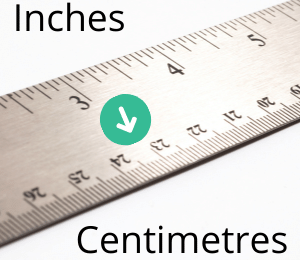When we think of speed in the animal kingdom, cheetahs, horses, and falcons often come to mind. However, there is one majestic creature that defies expectations with its surprising swiftness—the rhinoceros. Known for their massive size and robust build, rhinos may not be the first animal that comes to mind when contemplating speed, but they possess a remarkable ability to charge through the African savannah with incredible agility and speed. In this blog post, we will delve into the astonishing speed of a rhino and explore what makes these magnificent creatures such agile powerhouses.
The Need for Speed: While rhinos are generally known for their calm demeanor and ponderous movements, they can surprisingly reach impressive speeds when the situation calls for it. Typically, rhinos are solitary creatures that prefer a slow, leisurely pace as they browse on vegetation. However, when threatened or provoked, they can swiftly shift gears, demonstrating their remarkable agility.
Top Speeds of Different Rhino Species:
- Black Rhinoceros: The black rhinoceros, despite its name, can reach speeds of up to 34-37 miles per hour (55-60 km/h). This makes it one of the fastest large land animals in the world, capable of accelerating swiftly and maneuvering with unexpected grace.
- White Rhinoceros: The white rhinoceros is the largest rhino species, yet it can achieve impressive speeds of up to 30-35 miles per hour (48-56 km/h). Despite its size, this gentle giant can accelerate quickly and maintain a steady pace when needed.
- Indian Rhinoceros: Found in the grasslands and swamps of India and Nepal, the Indian rhinoceros can attain speeds of up to 25 miles per hour (40 km/h). While not as swift as its African counterparts, this species can still move surprisingly fast for its bulk.
Factors Contributing to speed of a Rhino:
- Muscular Build: Rhinos possess a robust and muscular physique, enabling them to generate powerful bursts of speed. Their solid frame, supported by strong limbs, allows for rapid acceleration, giving them an edge in situations that demand agility.
- Long Legs: Rhinos have long, sturdy legs that aid in their locomotion. These limbs provide a solid base for quick strides, allowing them to cover significant ground in a short amount of time.
- Efficient Respiratory System: Rhinos have a specialized respiratory system that ensures their muscles receive a constant supply of oxygen during intense bursts of speed. This adaptation helps them sustain their agility for more extended periods.
- Adaptations for Maneuverability: Despite their bulk, rhinos possess remarkable maneuverability. They have a well-developed sense of balance and an ability to make quick turns and sharp changes in direction, essential for evading threats in their environment.
How to calculate the speed of a rhino
Calculating the exact speed of a rhino in the wild can be a challenging task, as it requires precise measurements and sophisticated equipment. However, scientists and researchers have developed various methods to estimate the speed of animals, including rhinos. While these methods provide approximate values, they give us a good understanding of the speed capabilities of these magnificent creatures. Let’s explore two common approaches to calculating the speed of a rhino:
-
Radar Speed Guns:
One way to measure the speed of a rhino is by using radar speed guns, similar to those used by law enforcement to track vehicle speeds. This method requires specialized equipment and a clear line of sight to the rhino. Here’s how it works:
a) Set up the radar speed gun in a suitable location, ensuring that it is pointed towards the path the rhino is likely to take. b) When the rhino is approaching, activate the radar speed gun to measure its speed. c) The radar gun emits a radio wave that bounces off the rhino and returns to the device, providing an accurate measurement of the rhino’s velocity.
By repeating this process multiple times and taking average readings, scientists can estimate the rhino’s speed with a reasonable degree of accuracy.
-
Photographic Analysis:
Another method to calculate the speed of a rhino involves using photographs or videos taken of the animal in motion. This approach relies on tracking the rhino’s movement and measuring the time it takes to cover a known distance. Here’s how it can be done:
a) Choose a straight path where the rhino is expected to run. b) Position yourself at a fixed point along this path, ensuring a clear line of sight. c) Using a stopwatch or timer, start timing as the rhino enters your field of view. d) Stop the timer when the rhino reaches a predefined endpoint or covers a specific distance. e) Measure the distance between the start and endpoint using a measuring tape or other tools. f) Divide the distance by the time it took for the rhino to traverse it, giving you the average speed over that distance.
By repeating this process for different distances and averaging the results, you can obtain an estimate of the rhino’s speed.
Keep in mind that these methods provide approximate values, as the speed of a rhino can vary depending on factors such as terrain, individual fitness, and motivation. It’s also important to ensure the safety of both the observers and the rhinos while conducting any measurements in the wild.
In conclusion, calculating the speed of a rhino involves using radar speed guns to measure velocity directly or employing photographic analysis to estimate speed based on time and distance measurements. While these methods may not provide precise values, they offer valuable insights into the remarkable speed capabilities of these magnificent creatures.
Conclusion
The impressive speed of rhinos challenges our preconceived notions about these magnificent creatures. While they may appear slow and docile, their ability to charge through their natural habitats with agility and grace is a testament to their physical prowess. The combination of a muscular build, long legs, efficient respiratory systems, and adaptability contributes to their unexpected speed.
Understanding the impressive speed of rhinos not only deepens our appreciation for these incredible animals but also highlights the fascinating diversity of the animal kingdom. The rhino’s ability to navigate their environment swiftly underscores the importance of recognizing the unique strengths and adaptations of every species, reminding us that there is much more to these animals than meets the eye.
FAQs
Q: How fast can a rhino run?
A: Different species of rhinos have varying speeds. The black rhinoceros can reach speeds of up to 34-37 miles per hour (55-60 km/h), making it one of the fastest large land animals. The white rhinoceros can achieve speeds of up to 30-35 miles per hour (48-56 km/h), while the Indian rhinoceros can reach speeds of up to 25 miles per hour (40 km/h).
Q: Can a rhino outrun a human?
A: Yes, a rhino can easily outrun a human. With their impressive speed capabilities, rhinos can cover significant distances at high speeds. It is crucial to maintain a safe distance from these animals and avoid engaging in activities that may provoke or disturb them.
Q: What enables a rhino to run so fast despite its size?
A: Rhinos possess a combination of factors that contribute to their ability to run at remarkable speeds. They have a muscular build, long and sturdy legs, an efficient respiratory system, and adaptations for maneuverability. These physical characteristics, along with their powerful strides, allow them to accelerate quickly and maintain their speed when necessary.
Q: How do scientists measure the speed of a rhino?
A: Scientists use various methods to estimate the speed of a rhino. One common approach involves using radar speed guns, similar to those used by law enforcement to track vehicle speeds. Another method involves analyzing photographs or videos of rhinos in motion and measuring the time it takes them to cover a known distance.
Q: Can a rhino maintain its top speed for a long duration?
A: While rhinos can achieve impressive bursts of speed, they are not built for sustained long-distance running. Their speed is generally employed in short bursts when they feel threatened or during territorial disputes. After these brief sprints, they usually slow down to conserve energy and return to their usual leisurely pace.
Q: Are there any factors that affect a rhino’s speed?
A: Yes, several factors can influence a rhino’s speed. The terrain plays a role, as rough or challenging landscapes can hinder their ability to run at top speeds. Additionally, individual fitness, age, and motivation can impact how fast a rhino can run.



